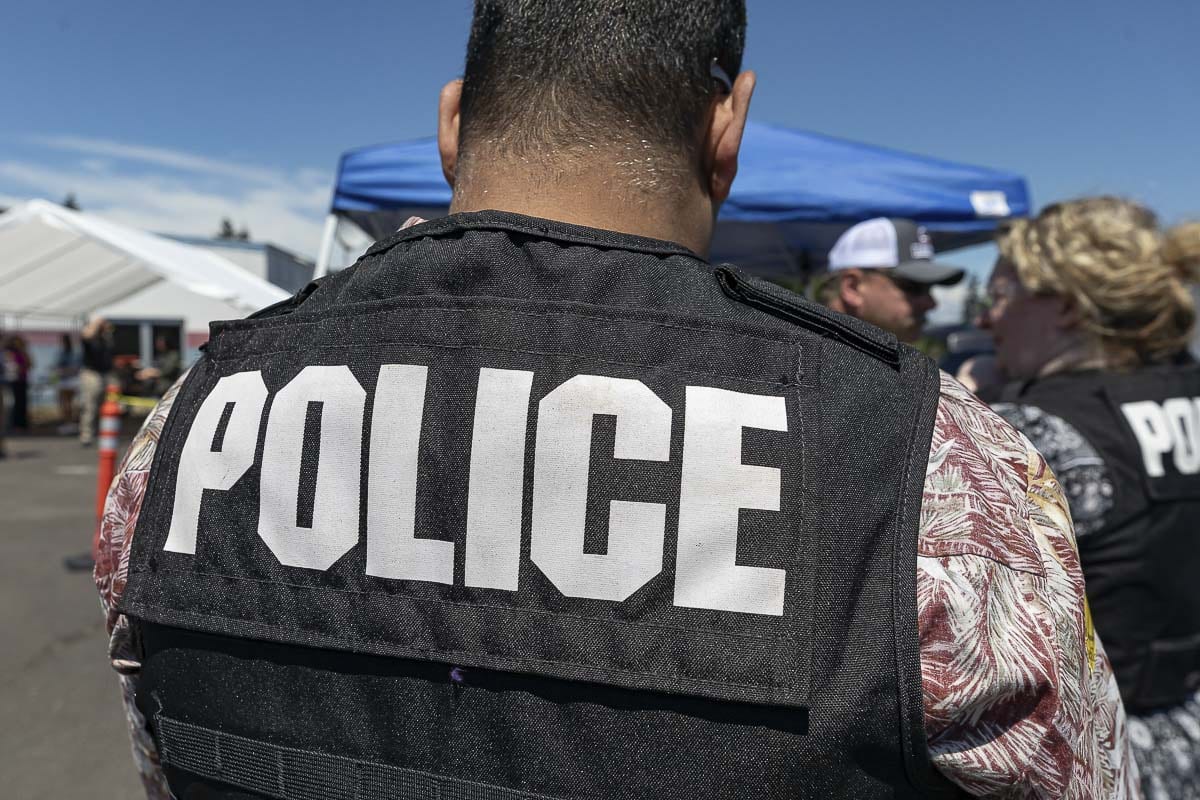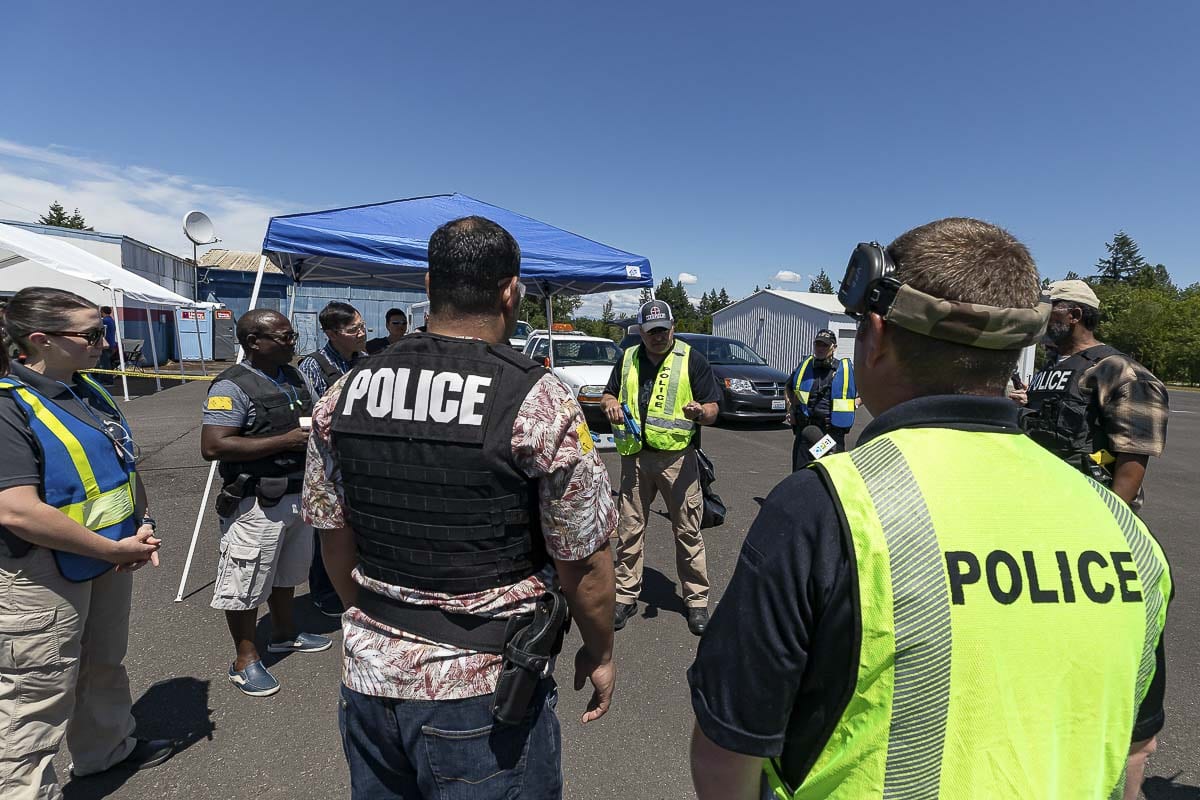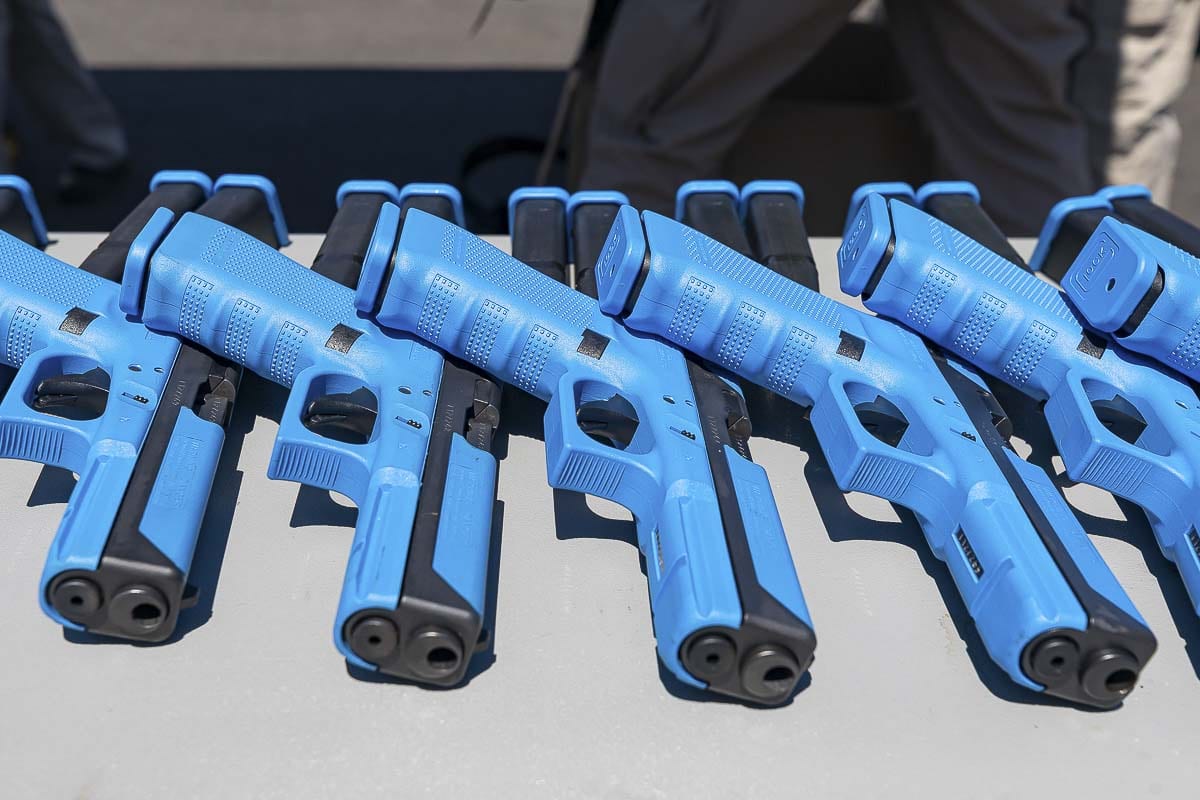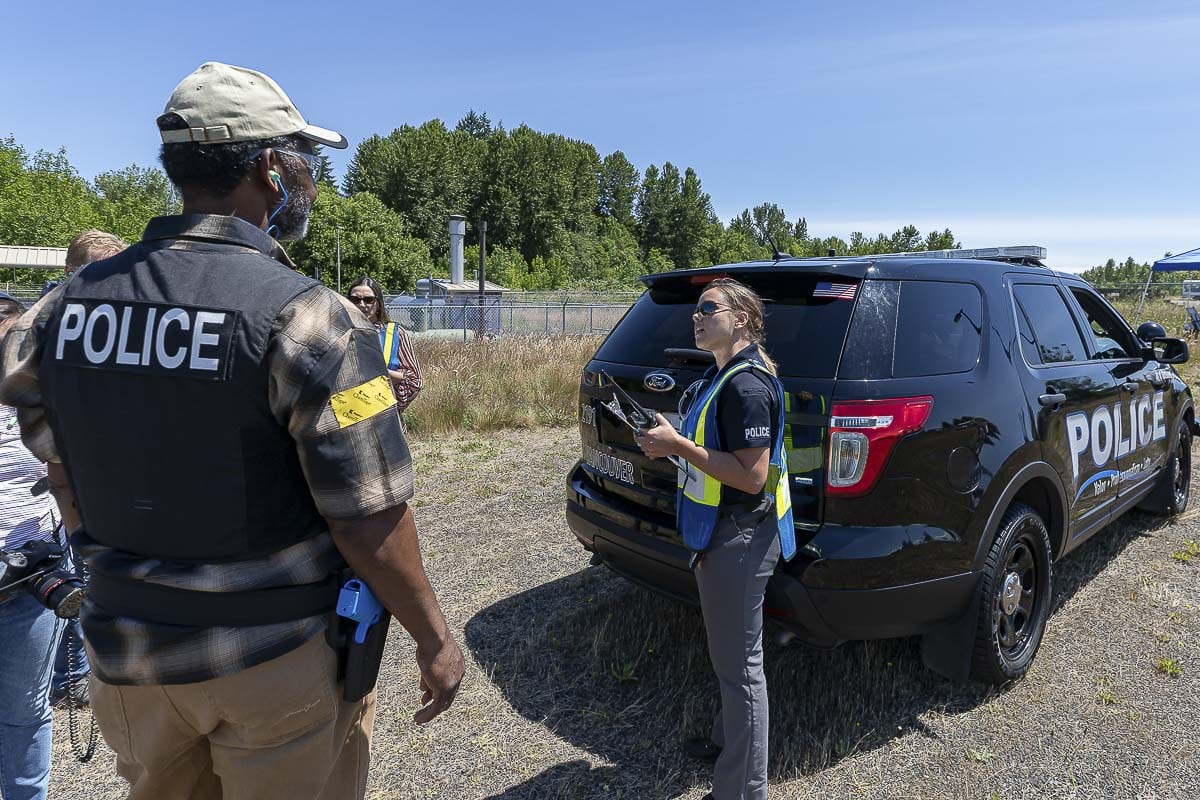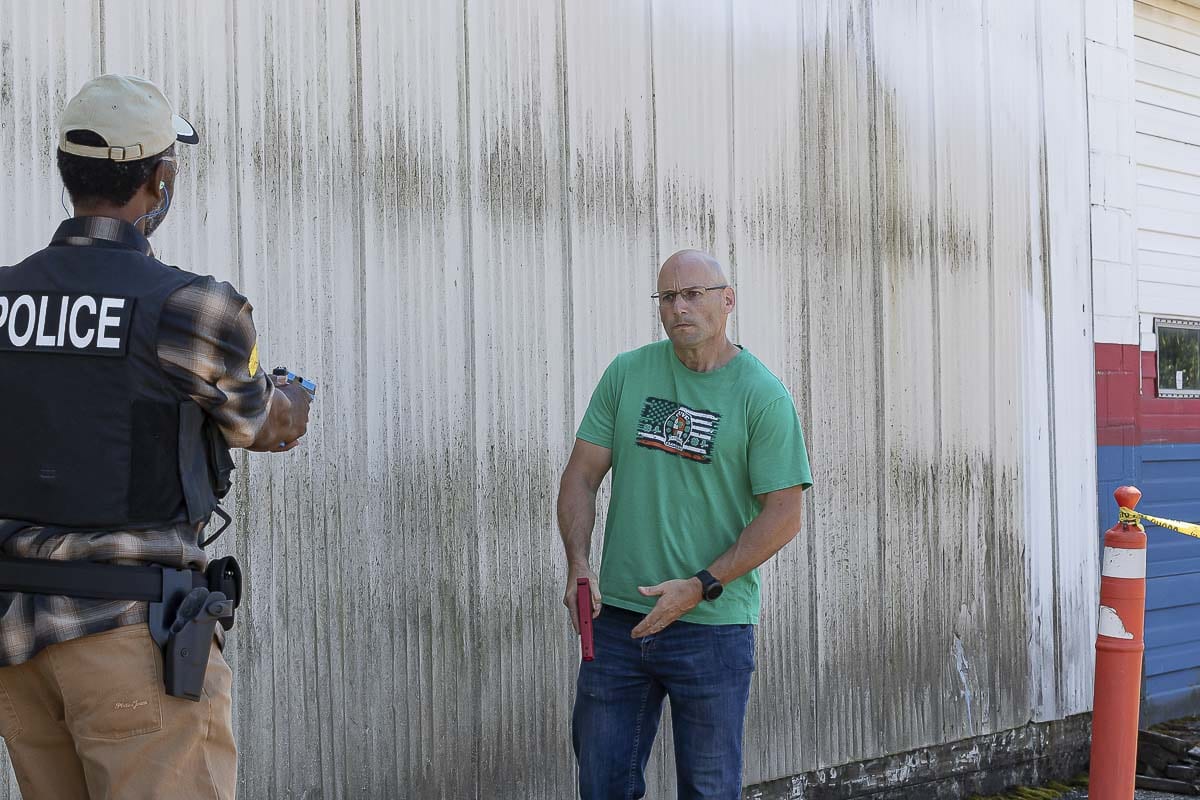The event was intended to help the Chief’s Diversity Advisory Team understand the real-world pressures facing officers in the field
RIDGEFIELD — “What are you going to do? Tase me?!?”
A man in a green T-shirt and baseball cap circles a tall black man in a black vest labeled “Police.” The guy in the green T-shirt is holding a long metal pipe in his right hand, raised up as if to strike, a menacing look on his face.
“You gonna tase me?” he challenges.
The tall black man pulls out a bright blue pistol, aiming it at the other man, who drops the metal bar and eventually falls to one knee.
“King’s X,” a woman’s voice calls out.
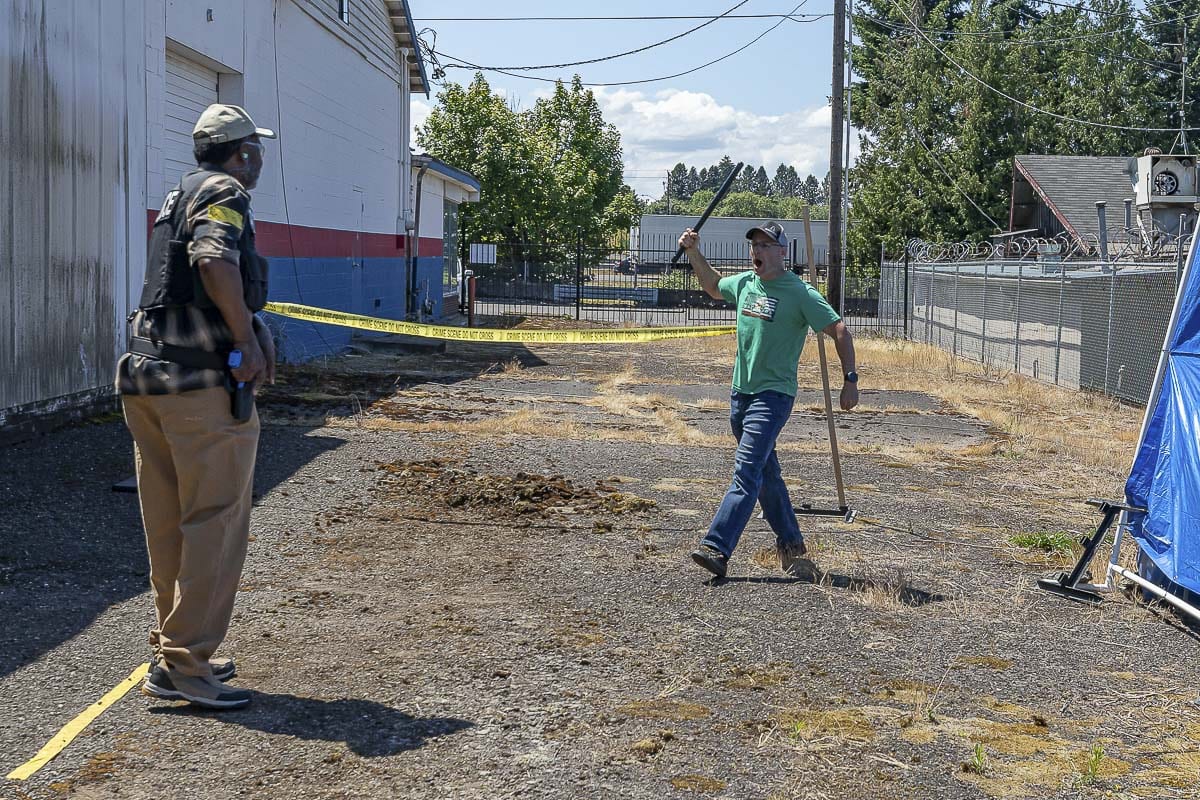
The man in the green T-shirt is Vancouver Police Department (VPD) training Sergeant Blaise Geddry. The tall black man is Lynn Marzette, a member of the Chief’s Diversity Advisory Team (CDAT), and chairman of the Legal Redress Committee for the National Association for the Advancement of Colored People (NAACP).
Marzette is finishing up the last of five training scenarios that Vancouver Police Officers drill with repeatedly.
The event, put on in the vacant lot behind the old Jollie’s Restaurant south of 179th along I-5, is an effort by the police department to show members of CDAT, who represent local minority communities, the kinds of split-second decisions officers have to make. The event comes on the heels of four officer-involved shootings for the department earlier this year, three of them fatal.
It was an aberration for a department not used to big city violence.
“In 2018, for police only, we had over 158,000 calls for service. Just for the city of Vancouver,” Sergeant Geddry told the group before their training began. “Of those 158,000 — approximate — we had approximately 450 uses of force … And that use of force can be anything from me having to pin you to the ground to holding you down, up against a wall, it could be pulling you out of a car.”
Geddry said that Vancouver Police training involves intense study of case law, examining the methods of other agencies, and watching how their fellow officers perform in the field.
“We’re constantly asking ourselves that as trainers and supervisors, and that should always be the question,” said Geddry, “can we do it better?”
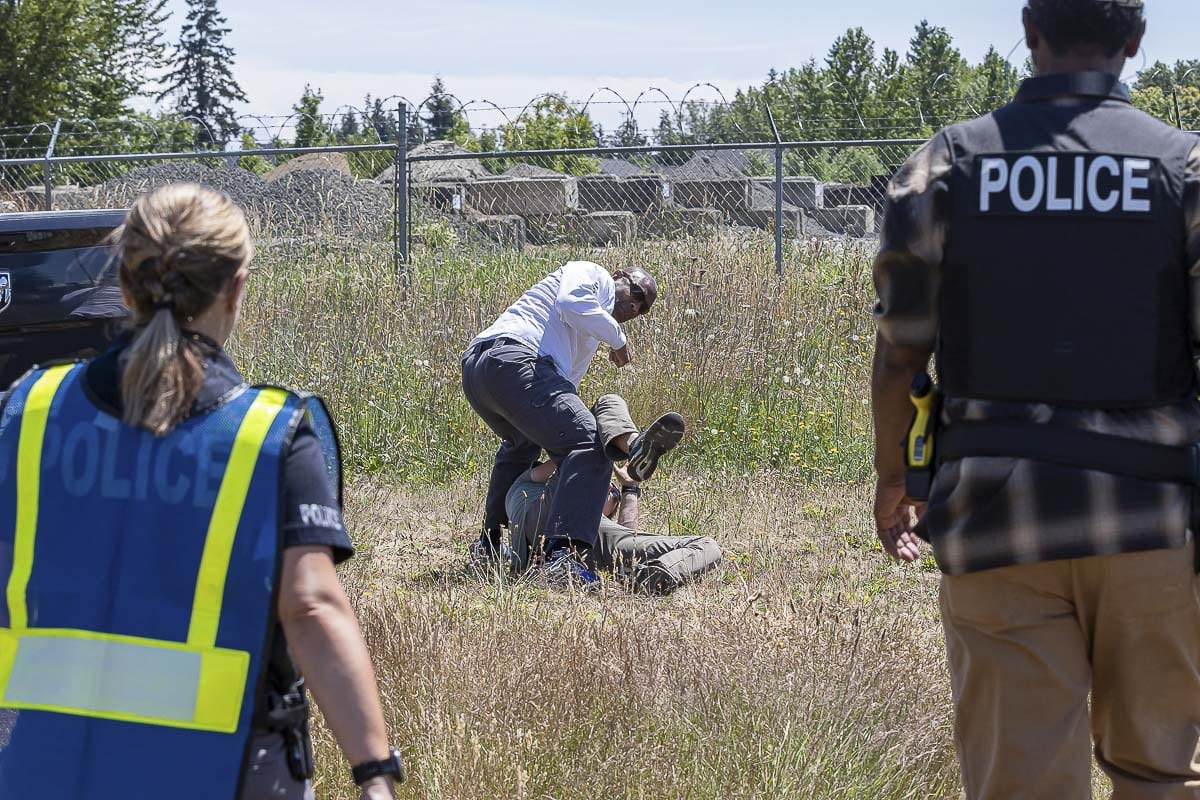
Into the line of fire
The first training scenario is inside a darkened building to simulate nighttime. A car is pulled over with two men inside. Marzette, acting in the role of police officer, approaches and asked for identification. The driver explains he left it at home. He doesn’t have the vehicle registration or proof of insurance either. It’s his wife vehicle, he says, but everything is OK.
While Marzette is focused on the driver, asking him to spell his first and last name, the passenger pulls out a handgun and opens fire. The scenario ends.
Officer Danielle Wass asks Marzette a series of questions, gauging his memory of the encounter; can he describe the driver and his passenger?
“Is there anything that you could have done differently that you know of?” asks Wass.
“It wasn’t part of the scenario, but I wanted to back off and ask for some backup,” responds Marzette. “But I went through with it because I wanted to just go ahead and fully execute the scenario.”
The next scenario has Marzette approaching a fight scene, with one man clearly on the losing end and screaming for help. As he approaches, the muscular attacker breaks off from the fight, advancing menacingly. Marzette is fumbling with the taser on his belt, unable to free it from the restraint before the other man is in his face and the scenario ends. The sticky taser will be a common complaint for Marzette, who worries that his lack of training puts him at a disadvantage in scenarios like this.

Wass says they drill every day to make sure they’re able to quickly pull and deploy a taser, or free their handgun from its restraint in an instant. Both are secured to prevent someone from grabbing the weapons during a physical struggle, such as the one in the second scenario.
The third scenario has Marzette and Wass coming up on a scene that is all too common these days. A man is holding a large knife to his neck while a crowd of bystanders begs “officer” Marzette to help him.
“Don’t hurt him!” they beg.
“Will you help me?” demands the man with the knife. “Just kill me. God, kill me!”
As Marzette struggles again to free his taser, the man with the knife walks into the crowd of bystanders, still begging to be shot.
The scenario ends.
“I’m going to let you in on a little secret,” Officer Wass says during their debrief afterwards, “even if you had gotten your taser out and you had used it, it wouldn’t have worked. Sometimes officers find themselves in that situation where they point their taser, and I’ve had it happen to me, they have too much clothing on, I’m gonna try my taser anyway and it didn’t work.”
“You’re not going to bring a taser to a knife fight. You’re just not,” Wass says, recounting the words of her training officers in the academy.
At the next scene, Marzette and another actual VPD officer are called to what’s known as a Civil Standby, to assist a woman with recovering possessions from her husband’s home.
This time Marzette approaches with more caution.
“Are there any weapons in the home?” he asks.
“Not that I know of,” the woman responds.
“Is your husband a violent man?”
“No, not at all.”
Inside the “home” the man is amicable and friendly, offering to shake the officer’s hands.
“Here’s your stuff,” he tells his pretend wife, “I set it all aside for you.”
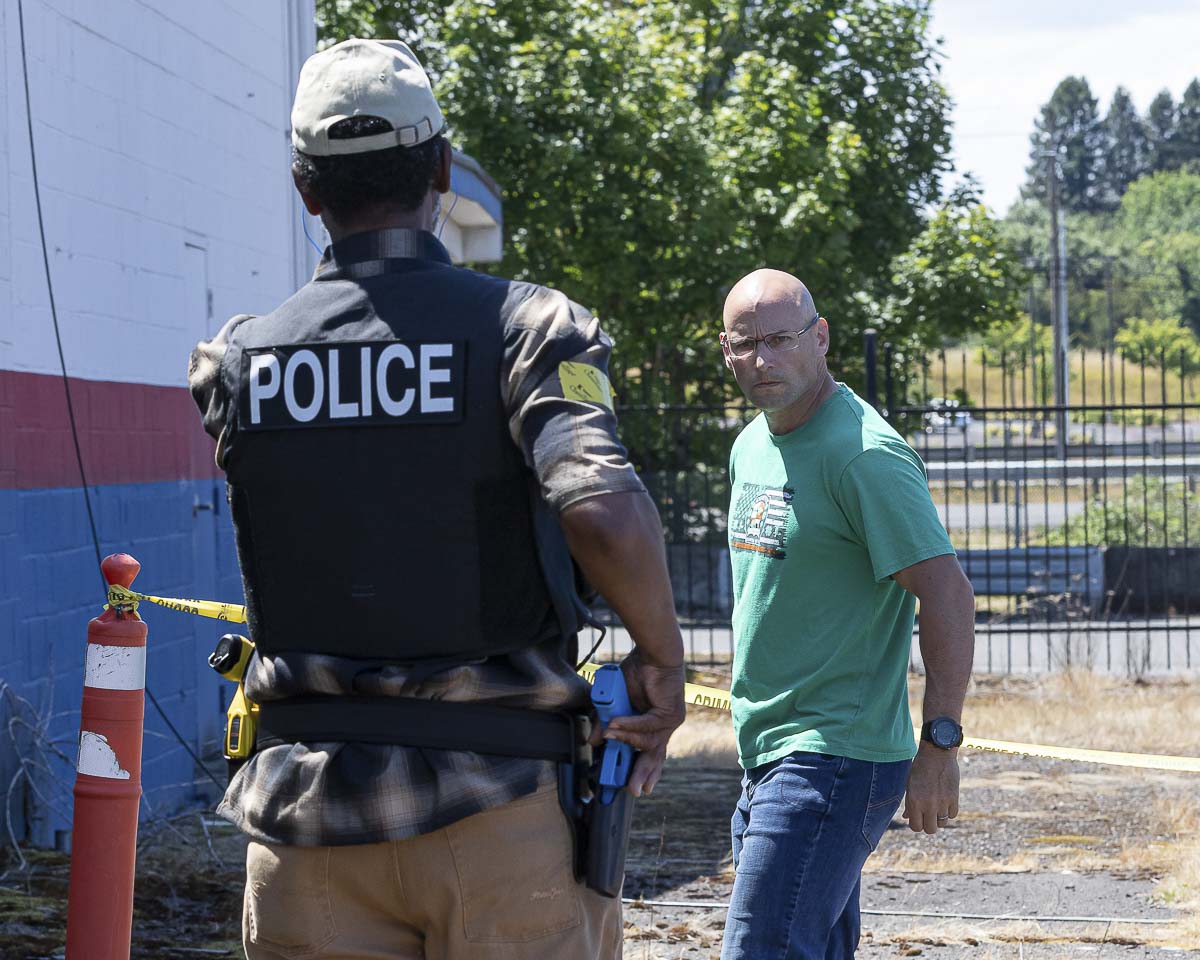
Suddenly an argument breaks out over something the husband says is his and the wife insists isn’t. The couple begins shouting. As the other officer pulls the wife aside the husband suddenly reaches into his waistband and pulls out a gun.
This time Marzette has his taser out in a flash, but he can’t deploy it before two blanks are fired. The wife, and potentially Marzette’s partner, are “dead.”
On the way to the final scenario, Marzette wonders why they wouldn’t have searched the husband first, just to make sure he was unarmed.
“There’s always the weight of officer safety versus constitutional rights,” responds Officer Chris Douville, Marzette’s “dead” partner.
The final scenario is actually a series of a half dozen mini scenarios in which Marzette stands with his back to the scene and Sergeant Geddry emerges, sometimes holding just a cell phone or a flashlight. Other times he approaches loudly, challenging, while brandishing a knife, a metal pipe, or a gun.
Once, Geddry emerges appearing to hold nothing at all, but walking menacingly around Marzette who pulls out his taser. Suddenly, Geddry lifts up his shirt and pulls out a bright red handgun, aiming it at Marzette who struggles to deploy the taser unsuccessfully.
“Drop it. Transition!” calls out Wass before ending the scenario.
“I was dead that time,” Marzette says, a small smile on his face.
The takeaway
After turning in his vest, belt, taser, and gun, Marzette returns to a tent to grab a drink and think about what he just experienced.
“I think this is educational for us, as citizens,” Marzette says. “Gives us a better appreciation for what officers go through in an intense situation.”
But, he adds, their experience in those scenarios is quite different from what officers actually experience in their day-to-day work.
“I mean we’re hit with five or six different scenarios in an hour or less,” he says, “and the officers who are out there every day, they may end up going through one of these per year.”
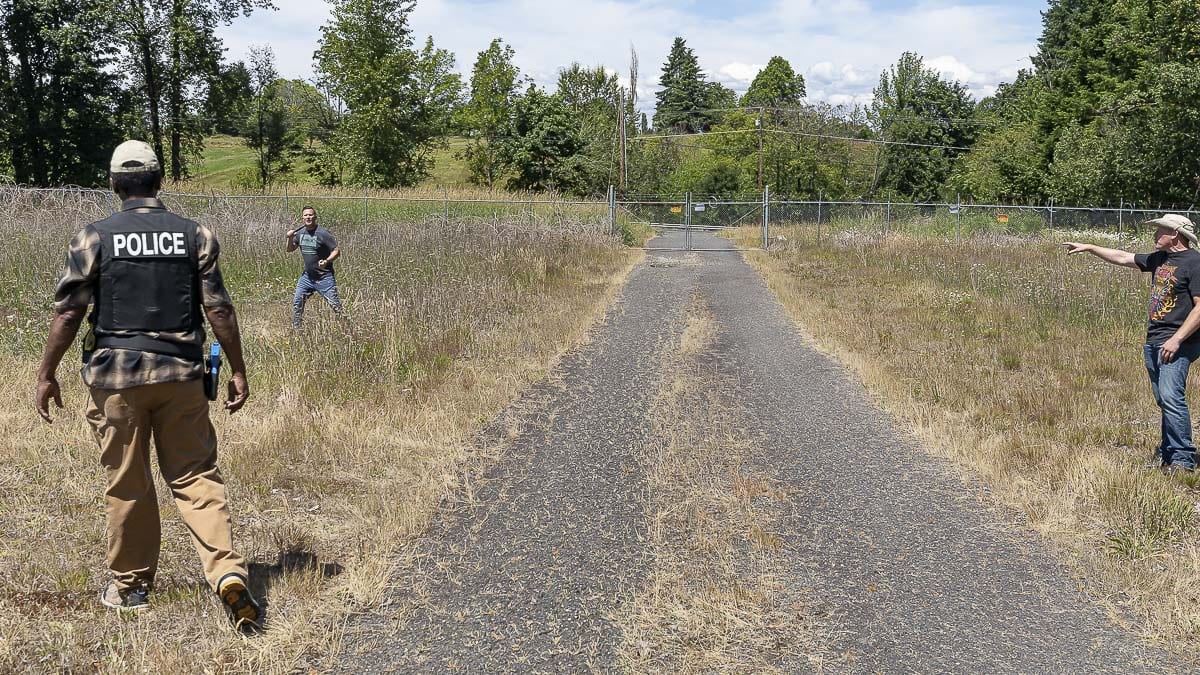
Marzette also believes a regular civilian going through scenarios like that will have a very different experience than an officer with hundreds of hours of training, both in how to de-escalate a situation, and in how to properly deploy a gun or taser more quickly and efficiently.
“I think what they’ve done here is good, for the CDAT commission to get a good appreciation for how fast things can occur,” Marzette says, “and the intensity of an officer’s thinking in a situation like that, where they have to make a quick decision on protecting themselves or protecting others.
“Still the question remains,” he adds, “the police shootings that we have raised questions on, we need more information to decide from our perspective, from the citizen’s standpoint, whether the officers were premature in their shooting of those individuals, or over-reactive in situations where they could have let the folks live.”
Marzette says he especially has questions about the death of 16-year old Clayton Joseph, who was killed in February outside of a Vancouver apartment complex. Police said Joseph was brandishing a knife and disobeyed orders to drop it, but Marzette says he still isn’t clear about whether the teen was putting anyone else at risk when he was shot.
Marzette says he is heartened to hear that VPD Chief James McElvain has agreed to a review of the department’s use of force policy, and hopeful future meetings with CDAT will yield more answers about what happened during the recent shootings as investigations are wrapped up.
McElvain thanked the group for coming out, and said he looked forward to hearing their thoughts about the training scenarios in their next meeting later this month.
